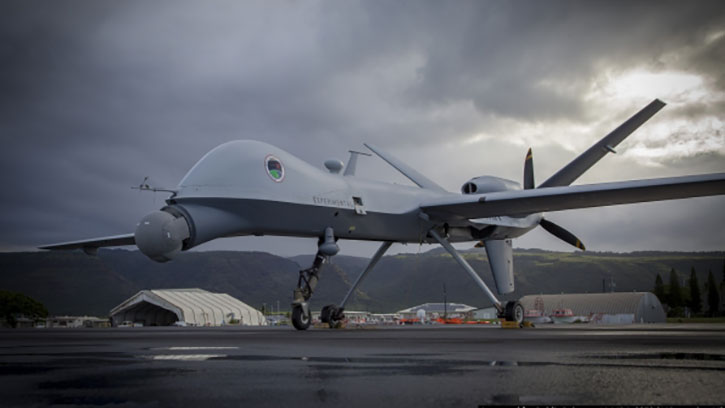Sharper Eyes for Fast Kill

Such UAV-based remote sensors have already contributed to decreased reaction time of the AEGIS ballistic missile defense (BMD) system. During tests of the AEGIS Baseline 9 system, held in 2014 the Aegis Weapon System on USS John Paul Jones (DDG-53) authorized Remote Engage Doctrine within 30 seconds of target burnout. More improvements in sensor technology, tactics and procedures will further reduce remote engagement response rate. Future tests will demonstrate how such sensors can cue the sea-based Aegis Weapon System to launch an SM-3 interceptor against a ballistic missile target, solely on tracks from airborne remote sensors. Such a test is planned for 2017 with a follow-on test, with improved sensors, to follow two years later.
The ABIR was not MDA’s first choice. Originally the plan was to use a constellation of Space Tracking Surveillance Systems (STSS) satellites to spot ballistic missile launch events and track the missiles through their ascent and mid-course, targeting them for intercept by naval and shore-based AEGIS assets. However, only two were produced, as the deployment of a full constellation proved too expensive.
[ismember]The principle of missile tracking ABIR was demonstrated earlier, in 2010, with sensors of Northrop Grumman’s AN/AAQ-37 Distributed Aperture System (DAS) designed for the F-35. These sensors comprise gigapixel infrared size sensors combining both Mid-Wave and Long Wave IR detectors. DAS scans a whole sphere all around the aircraft, spotting moving objects with high precision. In a video released by the manufacturer, DAS detected and tracked a rocket ascending over the horizon from a distance of 800 miles.[/ismember]
The use of Raytheon’s MTS-C payload optimizes the detection of hot and cold bodies using long-wave infrared (LWIR) detectors of the sensor. LWIR provides better performance tracking cold bodies, such as missiles and warheads, after booster burnout, in addition to tracking plumes and exhaust of ascending missiles. In August 2016 MDA awarded GA-ASI a $10 million contract to modify the MTS’ laser system, adapting the beam train optics to perform as an active tracking sensor, as part of the MQ-9 integration requirements.
MDA planned to improve measurement using stereo data from multiple platforms, provided by two sensor platforms simultaneously tracking the missile targets, handing over the tracks to AEGIS destroyers at sea. Indeed, the Predators taking part in the Pacific Dragon exercise supported naval ships, but MDA did not provide further details about functions they performed.
Playing the role of ABIR, unmanned airborne platform enhances early warning, enabling defenders to forward position ‘tripwire’ sensors and interceptors close to potential hostile hotspots where missile launches may occur. Forward positioning, well ahead of the main defensive array of sensors and interceptors, improves the missile defense’s capability to deal with missile salvos, and makes the whole BMD solution more affordable, MDA officials said.
Such an early warning would spot hostile missiles on their ascent over the horizon, when they are brightest – hottest and most visible from hundreds, even thousands of miles away. Upon burnout, the sensors continue to track the cold warheads, enabling discrimination of targets from decoys through their mid-course phase, allowing defenses on the terminal phase to plot multiple intercept points at fewer targets when the targets speed is the highest and time remaining to defend is critically short.
Other nations having established missile defenses are also considering persistent airborne sensors using UAS. Israel has evaluated the use of airborne sensors as standard building blocks for its multilayered BMD (HOMA). Japan has also earmarked unmanned, airborne BMD sensors for its unmanned systems’ roadmap for the next 20 years.
















